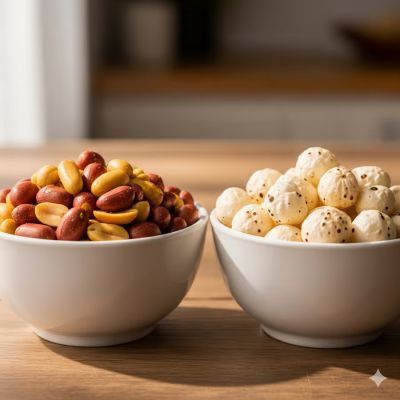The Monday evening dinner dilemma: You're adding up all the money you spent on food over the weekend and thinking, "I should really cook tonight." But that will require grocery shopping and cleaning. And you're hungry now.
So you pick up your phone and suddenly you've spent $35 on a carb-heavy meal that would have cost a fraction to prepare at home.
It's a less-than-ideal start to the week, and making it a habit could have implications for your overall well-being. Eating nutrient-dense, balanced meals is one of the most important things you can do for your physical and mental health, according to Anya Rosen, a New York-based registered functional dietitian.
Thankfully, there are ways to do so on a budget. Here are six ways you can eat healthier without spending your entire paycheck at the grocery store.
Meal prep
When we are hungry, we tend to make decisions that might not line up with our wellness or financial goals. So when you take the time to prepare multiple meals for the week, you are giving yourself a safety net to fall back on when you're in a hurry and hunger strikes.
Meal prepping can sound intimidating, no thanks in part to the countless social media feeds boasting balanced and aesthetically pleasing meals by the dozen, but it can be really simple. Some Instagram accounts that might help motivate you to break out the cutting board and meal prep containers for food storage are @meowmeix (food facts and meal inspiration), @keto_adapted (keto, or high-fat, low-carb meals) and @dailyveganmealprep (plant-based recipes).
Grain bowls are a great place to start. Grab 8 ounces of chicken breast (which will make about five to seven meals depending on how much you eat), an easy-to-chop vegetable like zucchini or asparagus, and some quinoa or rice. Or choose your own favorites; any protein, vegetable or grain will do -- the key is balance. Your best friends here will be a chicken shredder and vegetable slicer, easily available online, that will save you a lot of chopping time.
You can keep these prepped grain bowls interesting -- and varied -- by using different sauces, dressings and condiments throughout the week, Rosen said.
And whether with meal prep or just a single dinner, simple cooking at home can also save you the thousands of calories' worth of oil and butter that restaurants tend to sneak into their dishes, Rosen said.
Build a freezer stash
Stocking your freezer with nutritious foods will be sure to save you from the oh-so-tempting late-night take-out splurge. For example, you can buy frozen broccoli, shrimp and precooked rice separately to combine in a pan with some oil and seasoning for a healthy, 10-minute dinner.
While you won't see significant savings when buying frozen foods like chicken and vegetables as opposed to fresh, you will save money by having nutritious staples on hand, with the added benefit of a food with a longer shelf life.
Consider plant-based proteins
If you're trying to cook a well-balanced meal without splurging on meat or fish, try a vegetarian protein like tofu, tempeh, beans or legumes, said nutritionist and CNN health contributor Lisa Drayer. These foods are healthful and much more affordable than animal proteins.
Tofu, which is high in protein and contains all the essential amino acids your body needs, is also very simple to cook. Cut into cubes, sprinkle with salt, pepper, garlic and paprika (or seasonings of your choice) and toss into the air fryer or oven until golden brown. If you want them even crispier, add some corn starch to the mix. Combine with a vegetable and grain or stir into a simmering curry for a hearty and satisfying meal.
Some other plant-based meal staples include faux-meat pasta bolognese, chickpea "tuna" salad, and quinoa and lentil burgers.
Get creative in the kitchen
Some of the most affordable foods can also contain the most nutrients. For example, 1 pound of sweet potatoes costs around a dollar, according to the United States Department of Agriculture, and is filled with fiber, vitamins, minerals and antioxidants. A quick online search will give you dozens of ways to get creative with these nutritious gold mines. Bake them whole, slice into strips and season with salt, pepper and paprika for sweet potato fries, or simply cut into medallions or cubes and bake in the oven or air fryer.
Other healthy, low-cost food options include beans, rice, eggs, oats and lentils -- which can become the base for any number of healthy, tasty dishes. And if you don't feel like cooking, carrots and hummus, protein bars (make sure to check the ingredients first, as many have high amounts of sugar and additives), and fruit and yogurt all come ready to eat.
Another way to save money in the kitchen is by repurposing food waste and scraps, Rosen said. For example, use bones from meat or poultry to make a broth, pour leftover pasta sauce or soup into large ice cube trays to have on hand for smaller recipes, and freeze fruit and veggies that are about to go bad to use in a smoothie later. (The general rule is one week post-purchase for using fresh fruit and vegetables, but just look to make sure there is no mold growth before freezing.)
Smoothies
One of the easiest and most inexpensive ways to get a nutrient-packed and delicious snack or meal into your diet is with smoothies. Using the right ingredients, you can create a well-rounded meal in minutes. Plus, most of the components can also be stored in your pantry or freezer.
A simple go-to smoothie can include frozen banana slices (for texture and natural sweetener), frozen or fresh spinach, frozen cauliflower rice (for added nutrients and texture), and then your choice of fresh or frozen berries, protein powder, and nut butter (for healthy fats). On Instagram, @healthyblends shares great smoothie recipes and inspiration.
Think of smoothies as a vehicle for your daily vegetable intake, as leafy greens like kale and spinach are easy to mask among sweeter ingredients like blueberries, strawberries and bananas. The mistake most people make with smoothies, Rosen said, is focusing on fruit and skimping on protein and healthy fats, which can cause a blood sugar spike and crash. If you find that you are slurping your smoothies too quickly, sprinkle some chopped nuts or low-added-sugar granola on top to encourage you to slow down and chew.
































